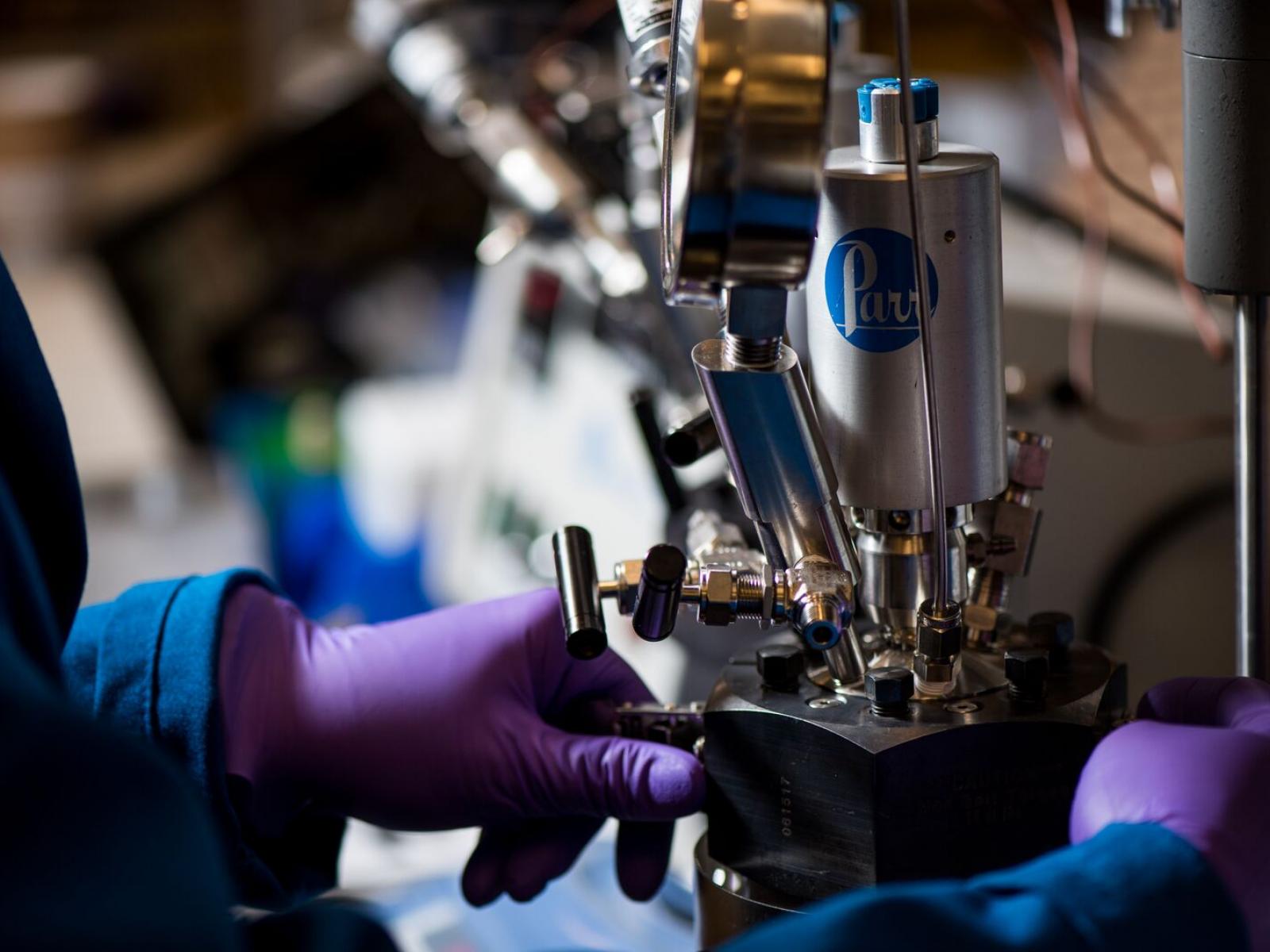Nuclear Science and National Chemistry Week
It's two for one! Celebrate both Nuclear Science Week and National Chemistry Week with us

The research explores the structure and functionality of metal oxides in heterogeneous catalysis. There is a strong emphasis on evaluating the structure of materials under reaction conditions with in situ solid-state magic angle spinning nuclear magnetic resonance spectroscopy (ssMAS NMR).
(Photo by Andrea Starr | Pacific Northwest National Laboratory)
October 18, 2021 – October 22, 2021




